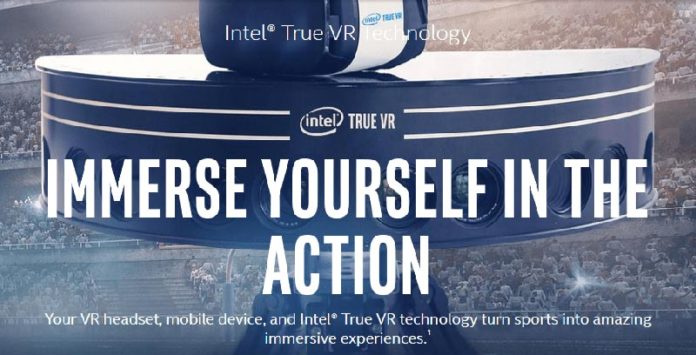Intel has built something truly revolutionary for VR sportscasting in True VR. Vr broadcasting has exploded in the past year as the entry-level cost of a headset falls lower and lower. Nearly every smartphone can now process some form of VR or panoramic content, and Intel is taking advantage with a big push in this space beginning with the Olympics this year. Get ready for a ton of sports content from nearly every major league, broadcast as highlights and in real time.
How it Works
Existing technology is akin to how crews filmed the famous Matrix bullet-dodge scene, where a string of cameras capture Neo as he bends backward to avoid incoming fire. Twelve cameras attached to a line capture the action, while powerful computer processing stitches the images together for VR viewers.
A new kind of system relies on half that number of cameras and can stream a staggering 1 TB of data across fiber optic cables. The result is a more portable system that is also more powerful, allowing Intel to take the lead broadcasting sports in VR.
Technical Specs
These cameras are a photographer/videographer’s dream. Some can capture 5K, all process 13 megapixels at 60 frames per second. Bumping the volume of data each camera can capture means that Intel can effectively cut the number of cameras it needs by half. Each pod now consists of six cameras, making it portable and much easier to install.
The cameras are also well protected. The system works indoors and outdoors, so Intel can truly capture sports in any condition.
Viewers get a fluid stream that is well protected from interruptions and technical glitches thanks to these adjustments under the hood.

True View is a Revolution
As cool as the camera technology is, the real revolution is True View. This fantastic technology uses 38 cameras capturing 5K imagery, placed strategically around the stadium, to render a digital version of the stadium. It’s hyper-fast photo stitching, but Intel believes this technology can show angles from locations that don’t have a camera.
They call it FreeD, and the video below is a good proof of concept:
[youtube https://www.youtube.com/watch?v=J7xIBoPr83A&w=560&h=315]
One look at FreeD is all you need to understand the incredible feat Intel is trying to pull off. It almost feels like a video game. Thirty-eight servers process terabytes of data to create a customizable viewing experience. There are no fixed locations to view from, and fans will be able to go anywhere and watch from any location in the stadium.
The educational implications alone are staggering. Throw in detailed statistics and the ability to rewind and the entire game of football changes. Once teams have regular access to this technology, locker room analysis will evolve to a level no one anticipated.
Availability
Those with an Oculus Rift or Google Daydream can sample this technology now. Just search for and download Intel’s True VR application on your app store, then enjoy the highlights. So far, Intel’s partnerships include content from the NFL, NBA, MLB, PGA, NCAA, and highlights from the Olympics in PyeongChang.
What’s interesting about the app is how it allows for a different viewing experience of the same event. Moments you witness on live TV look very different when you can move the camera your way. It also makes you appreciate the art of sports broadcasting and camera placement.
Final Thoughts
Live sports broadcasting in VR continues to grow, especially on mobile devices. Tomorrow’s sports bar contains a lot of fun gadgetry, but it’s also got patrons sporting VR visors and watching their favorite players from any angle they choose.


